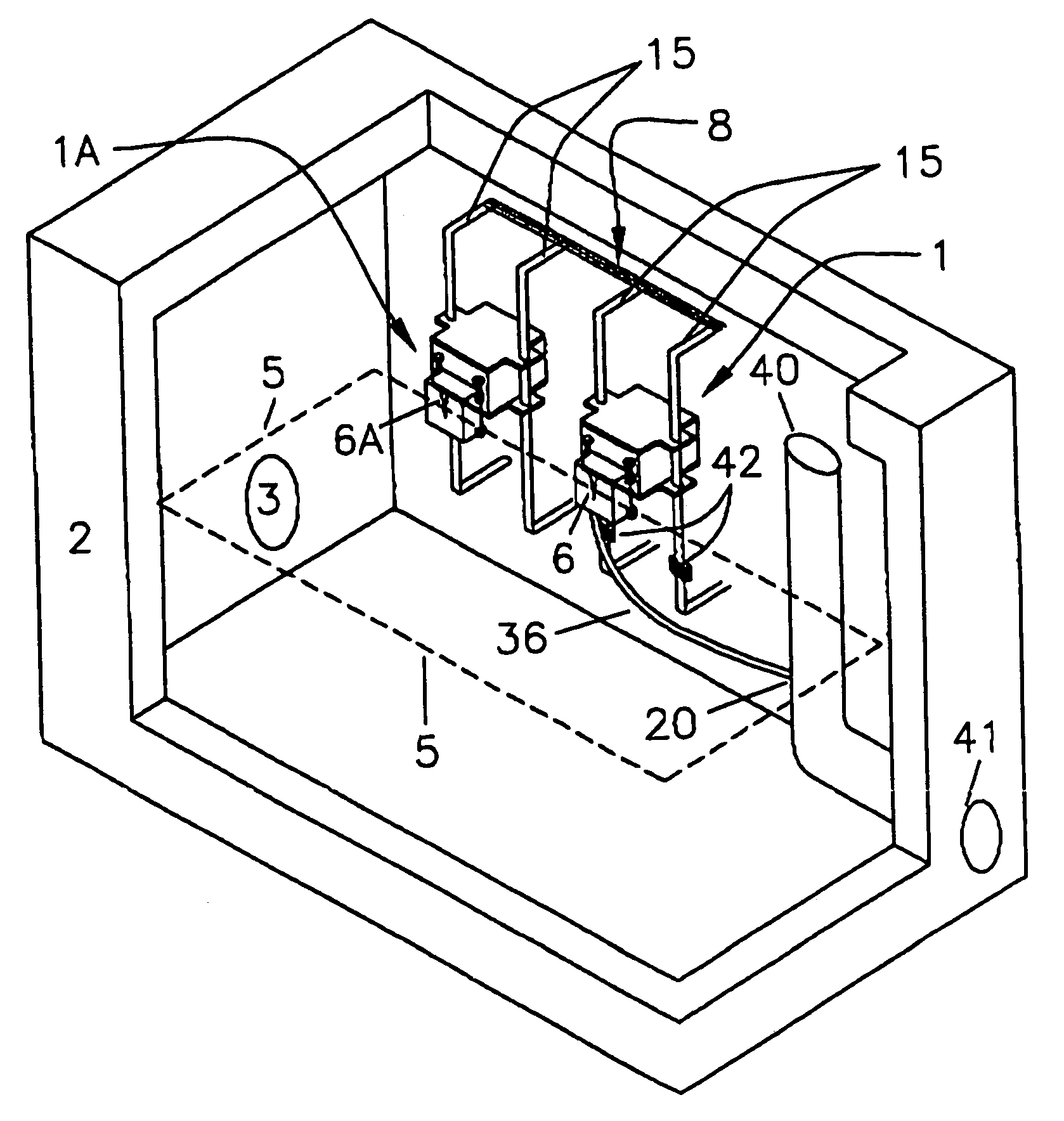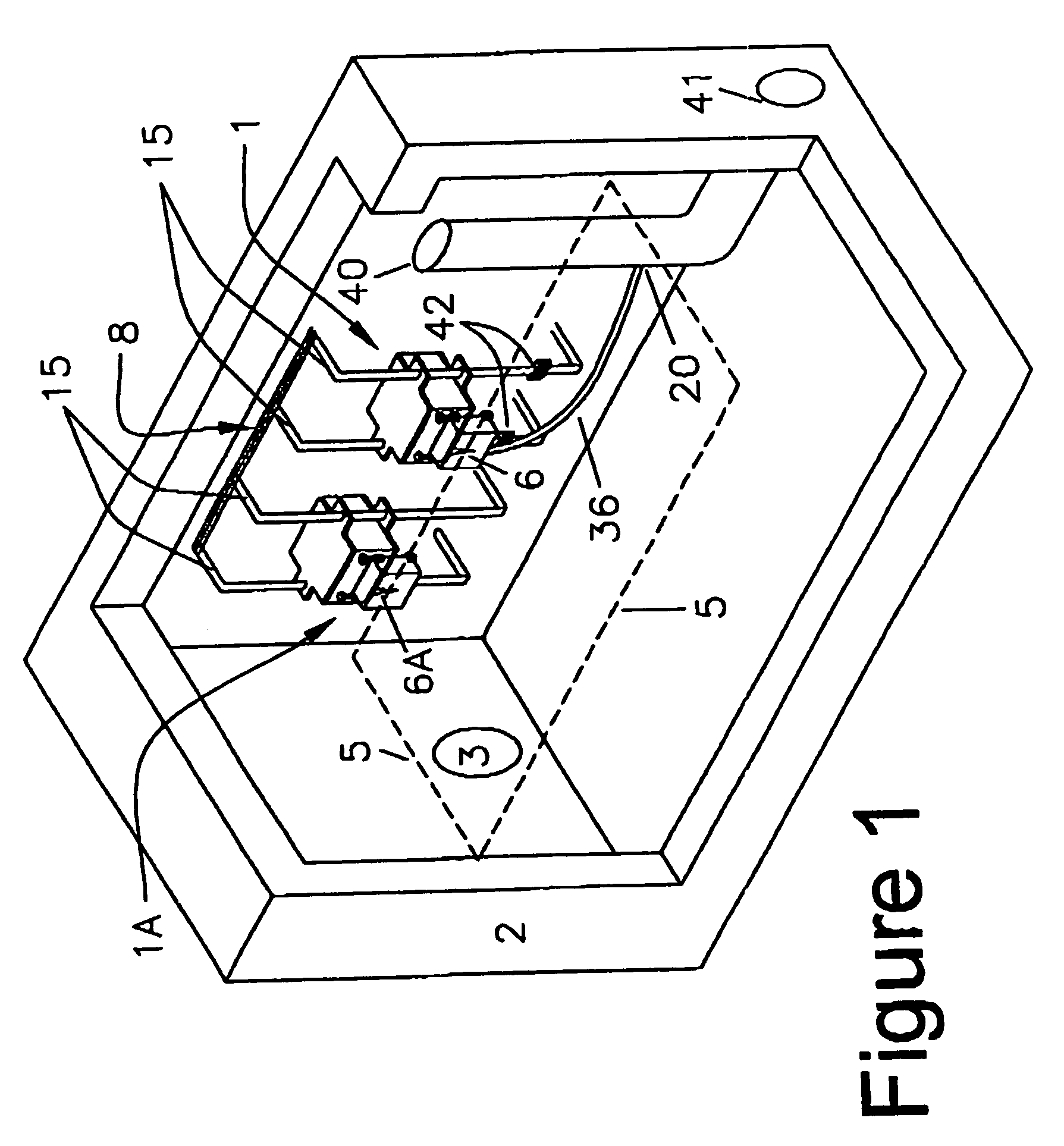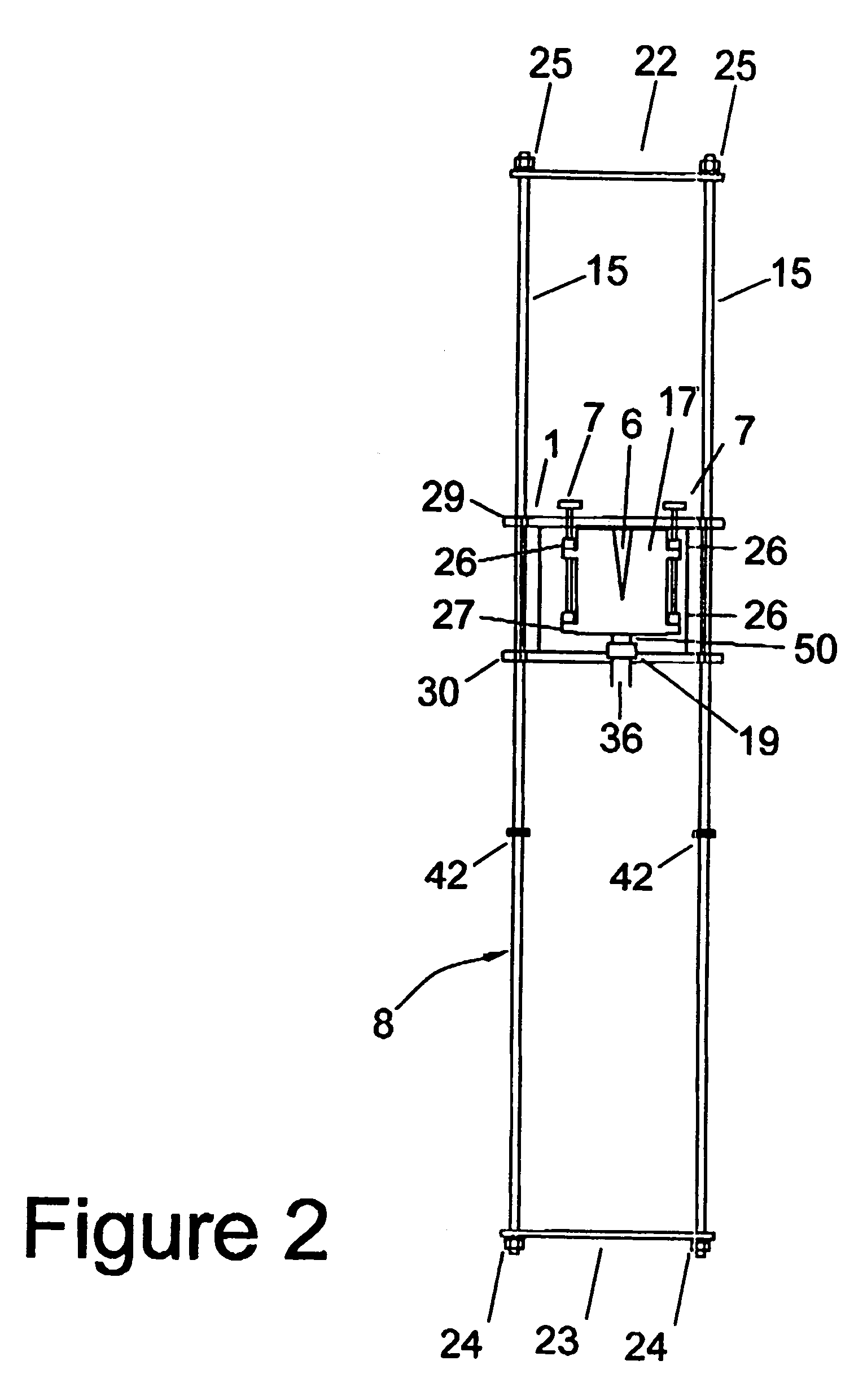Passive method for obtaining controlled drainage from a vessel
a technology of controlled drainage and passive method, which is applied in the direction of sewer systems, marine site engineering, construction, etc., can solve the problems of increasing installation, maintenance and operating costs, electrical pumps not operating if power is supplied, and actual flow rates seldom match the desired drainage ra
- Summary
- Abstract
- Description
- Claims
- Application Information
AI Technical Summary
Benefits of technology
Problems solved by technology
Method used
Image
Examples
Embodiment Construction
[0029]FIG. 1 illustrates an embodiment of the invention. In FIG. 1, floating weir assemblies 1 and 1A are disposed in vessel 2. Vessel 2 is partially filled with a fluid having a surface indicated by line 5. Fluid enters vessel 2 through fluid entrance 3. Floating weir assemblies 1 and 1A are mounted on optional support rack assembly 8. Each floating weir assembly includes a weir opening (6 and 6A, respectively) through which fluid enters the fluid inlet for removal from the vessel. The height of weir openings 6 and 6A are adjusted such that at least a portion of each of them is submerged below surface 5. Fluid entering weir opening 6 drains from vessel 2 by entering fluid inlet 17 (FIG. 2) and draining out of exit opening 50 into hose 36 through joint 20 into drainpipe 40. Fluid entering drainpipe 40 is removed from vessel 2 through fluid outlet 41.
[0030]Turning to FIGS. 2 and 3, floating weir assembly 1 is seen to include buoyancy means 11 and fluid inlet 17. Buoyancy means 11 is ...
PUM
 Login to View More
Login to View More Abstract
Description
Claims
Application Information
 Login to View More
Login to View More - R&D
- Intellectual Property
- Life Sciences
- Materials
- Tech Scout
- Unparalleled Data Quality
- Higher Quality Content
- 60% Fewer Hallucinations
Browse by: Latest US Patents, China's latest patents, Technical Efficacy Thesaurus, Application Domain, Technology Topic, Popular Technical Reports.
© 2025 PatSnap. All rights reserved.Legal|Privacy policy|Modern Slavery Act Transparency Statement|Sitemap|About US| Contact US: help@patsnap.com



